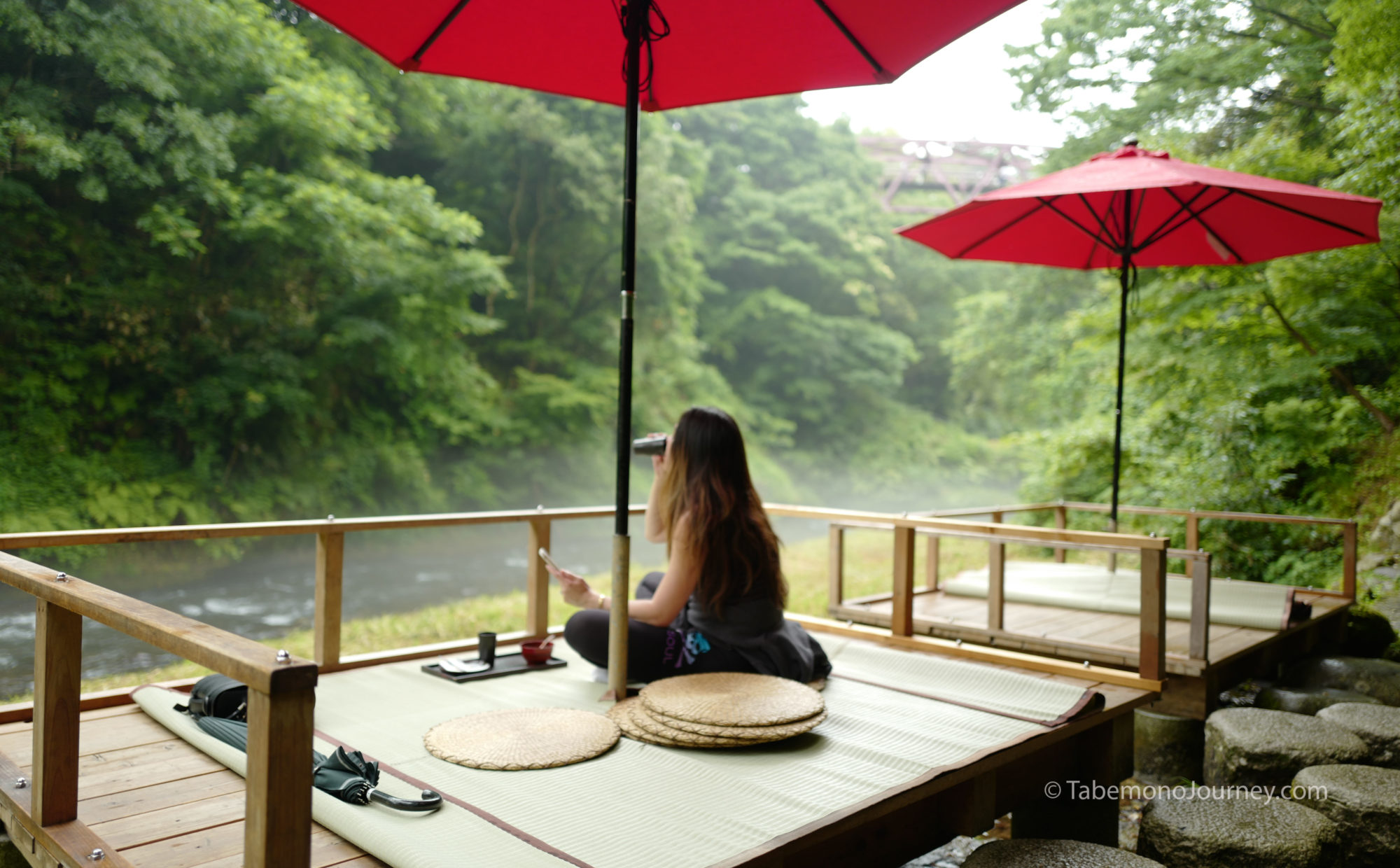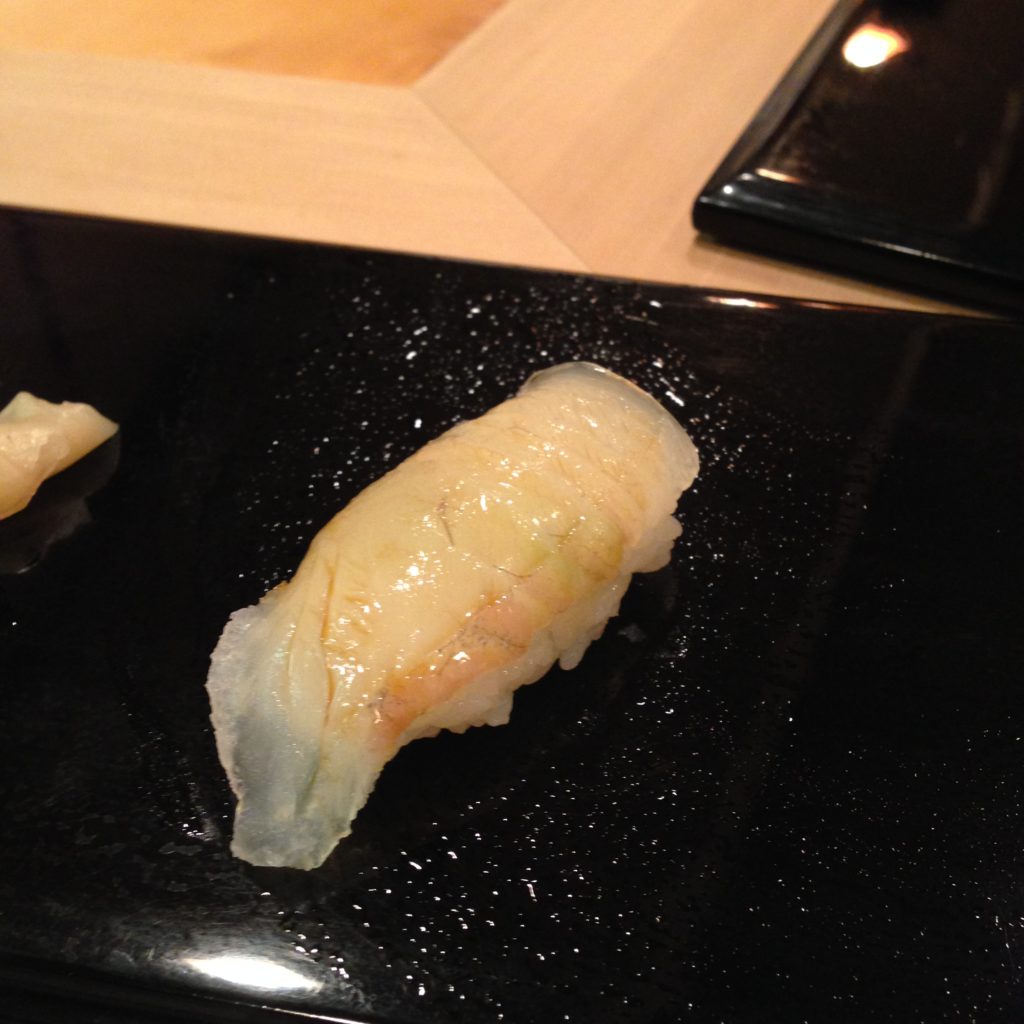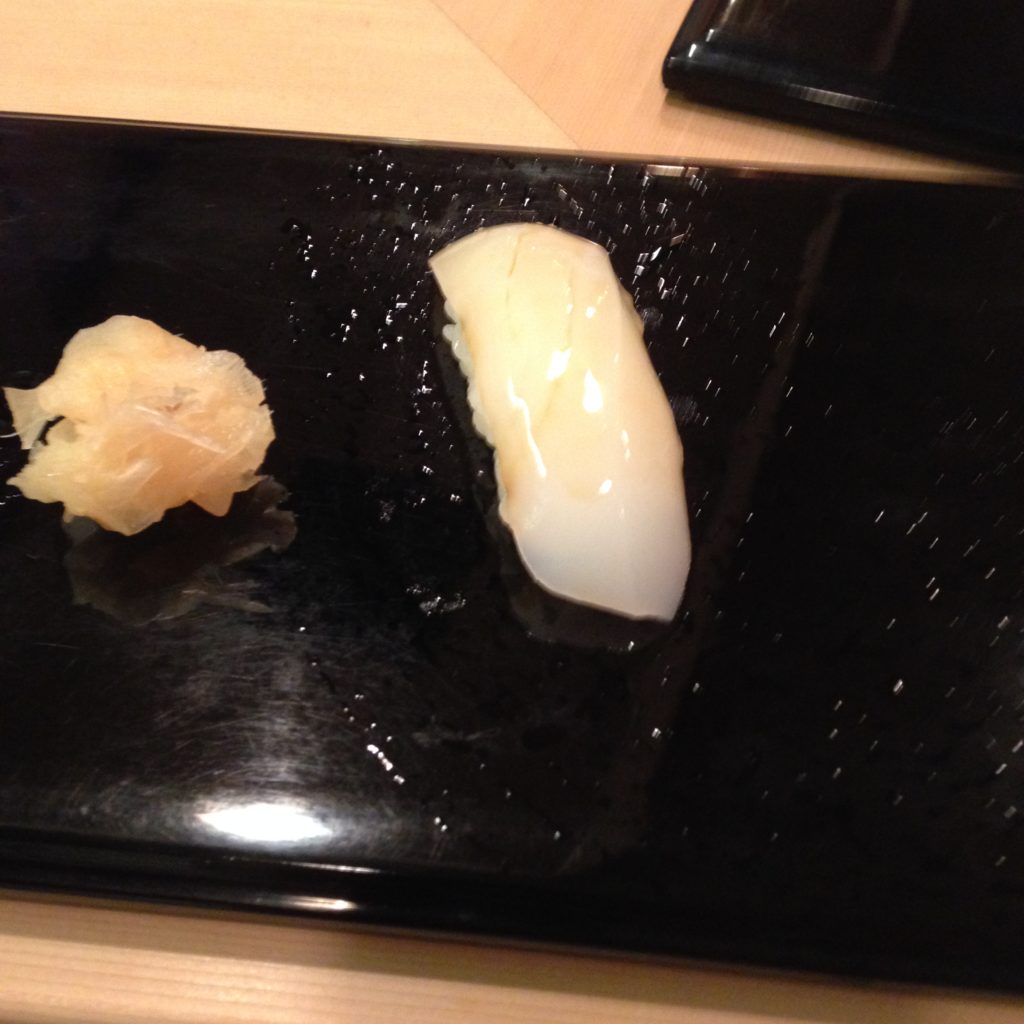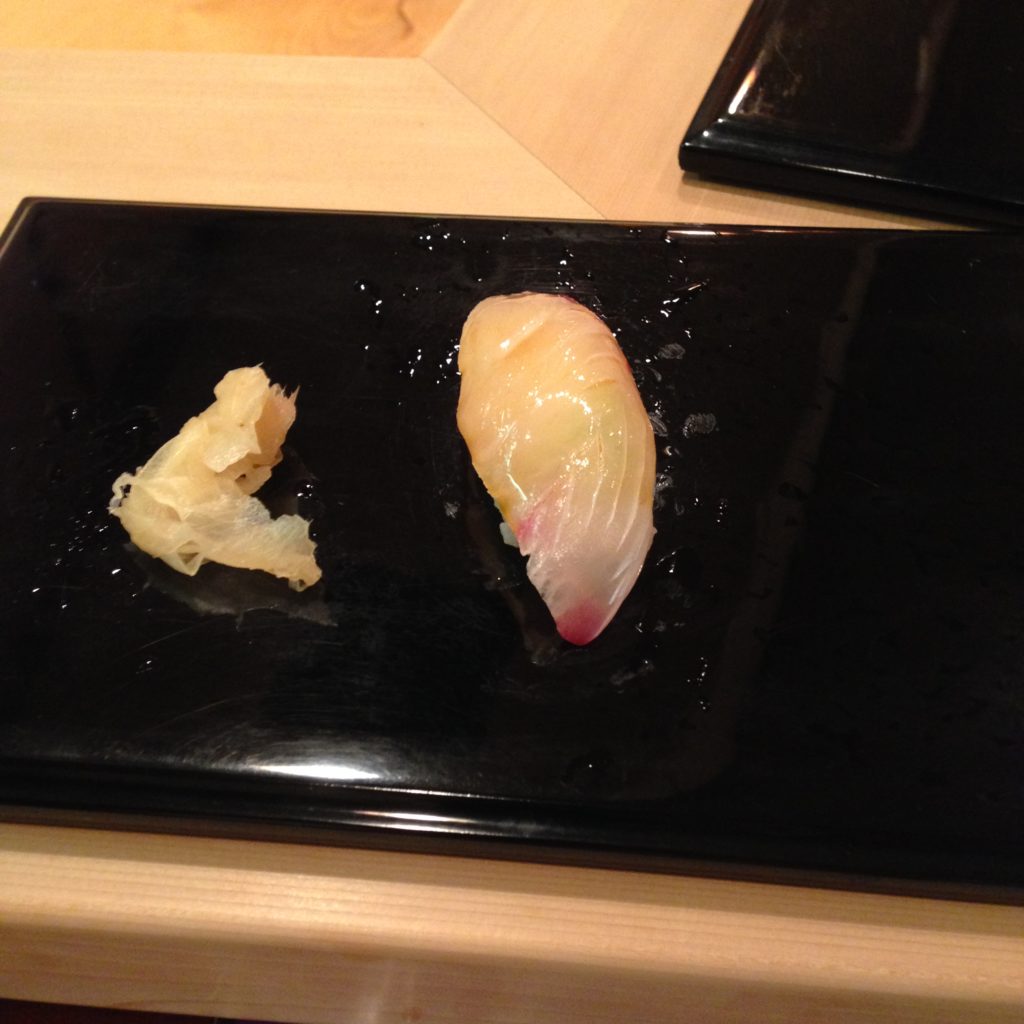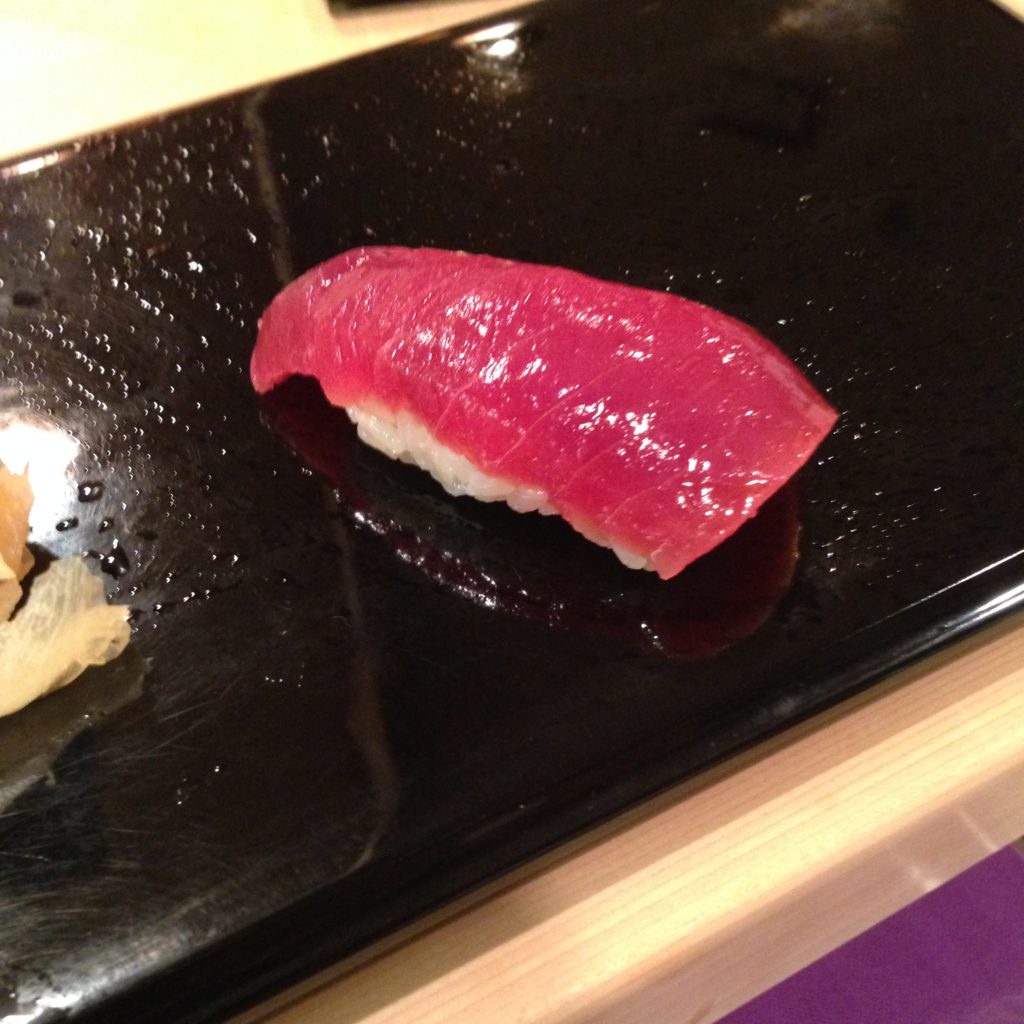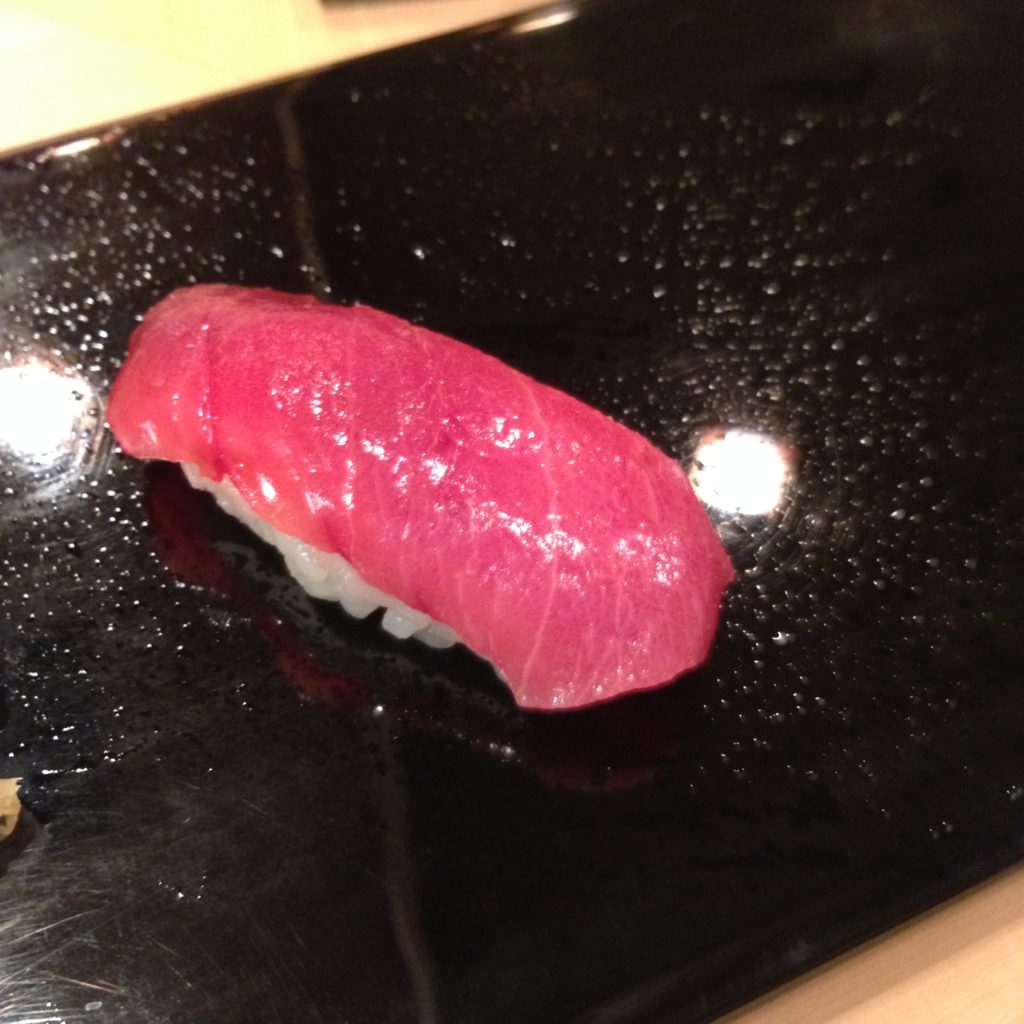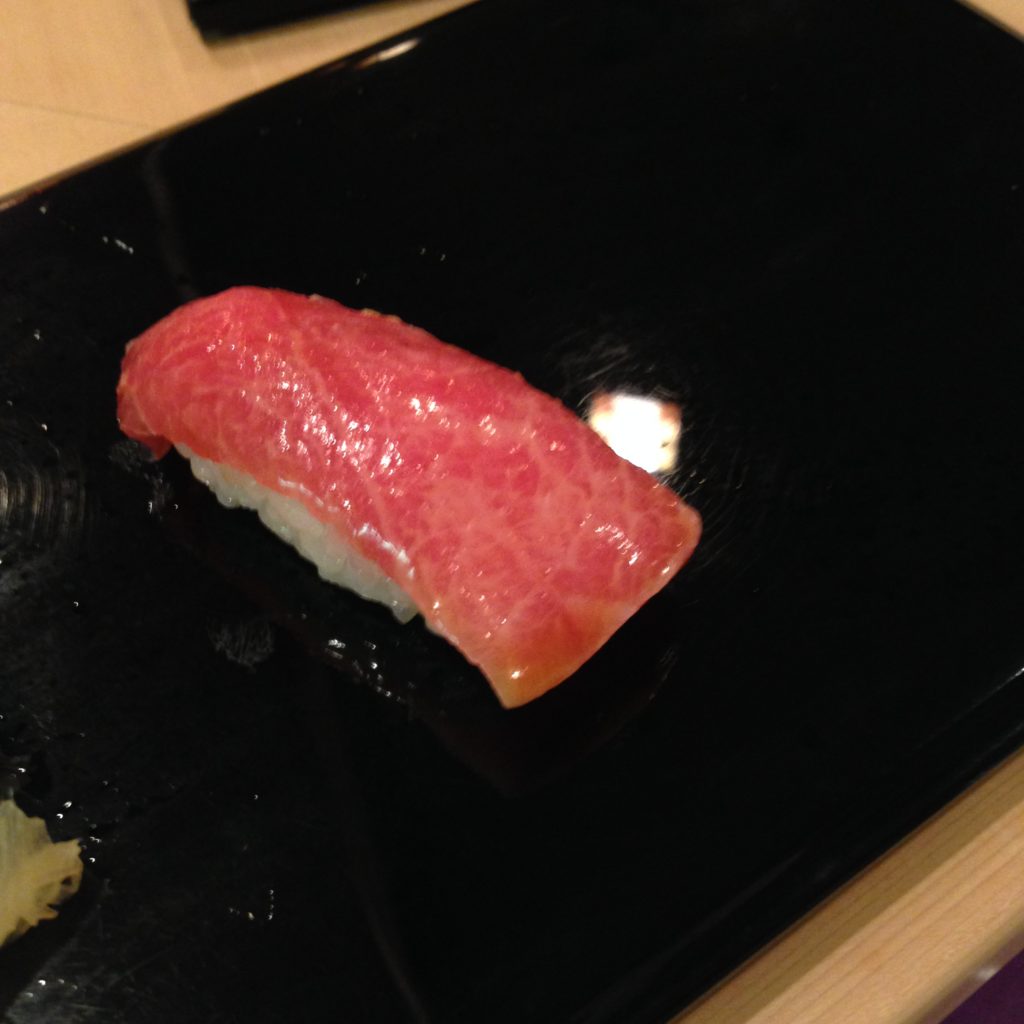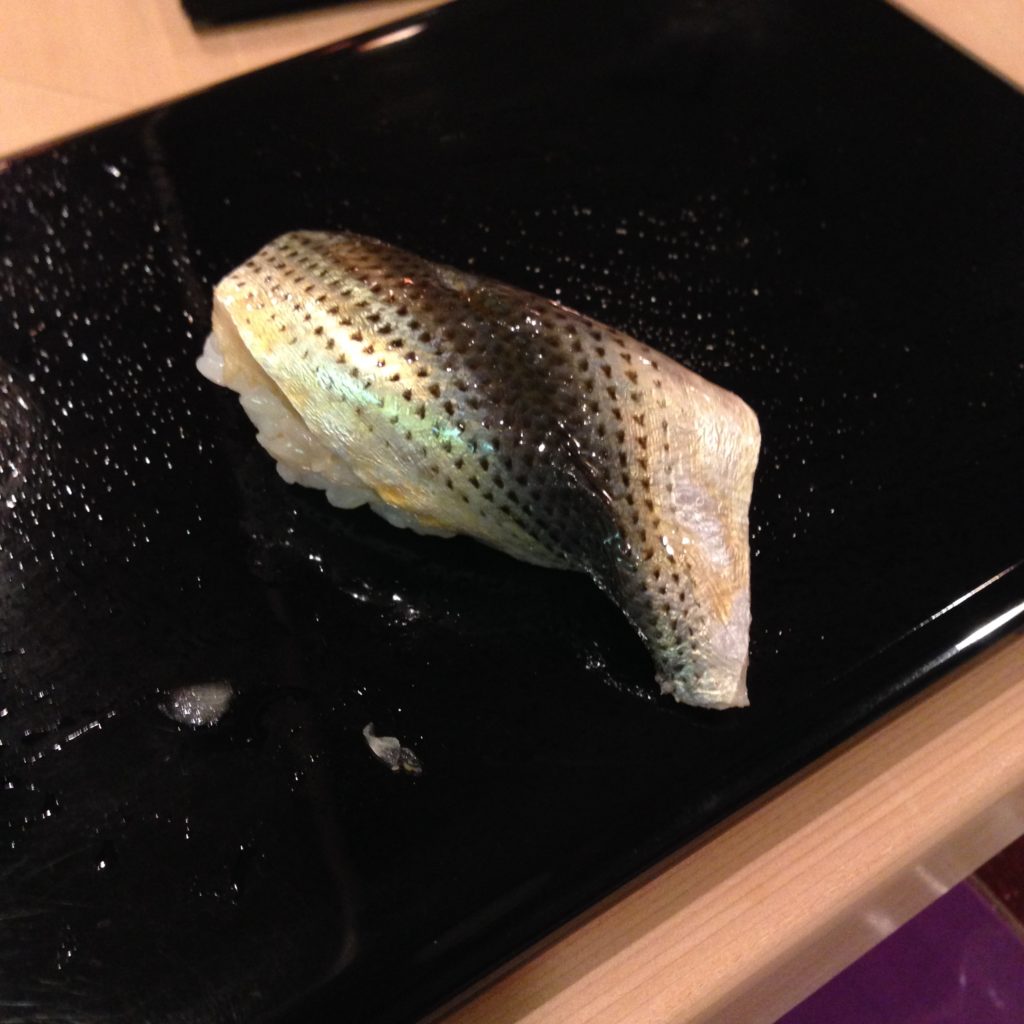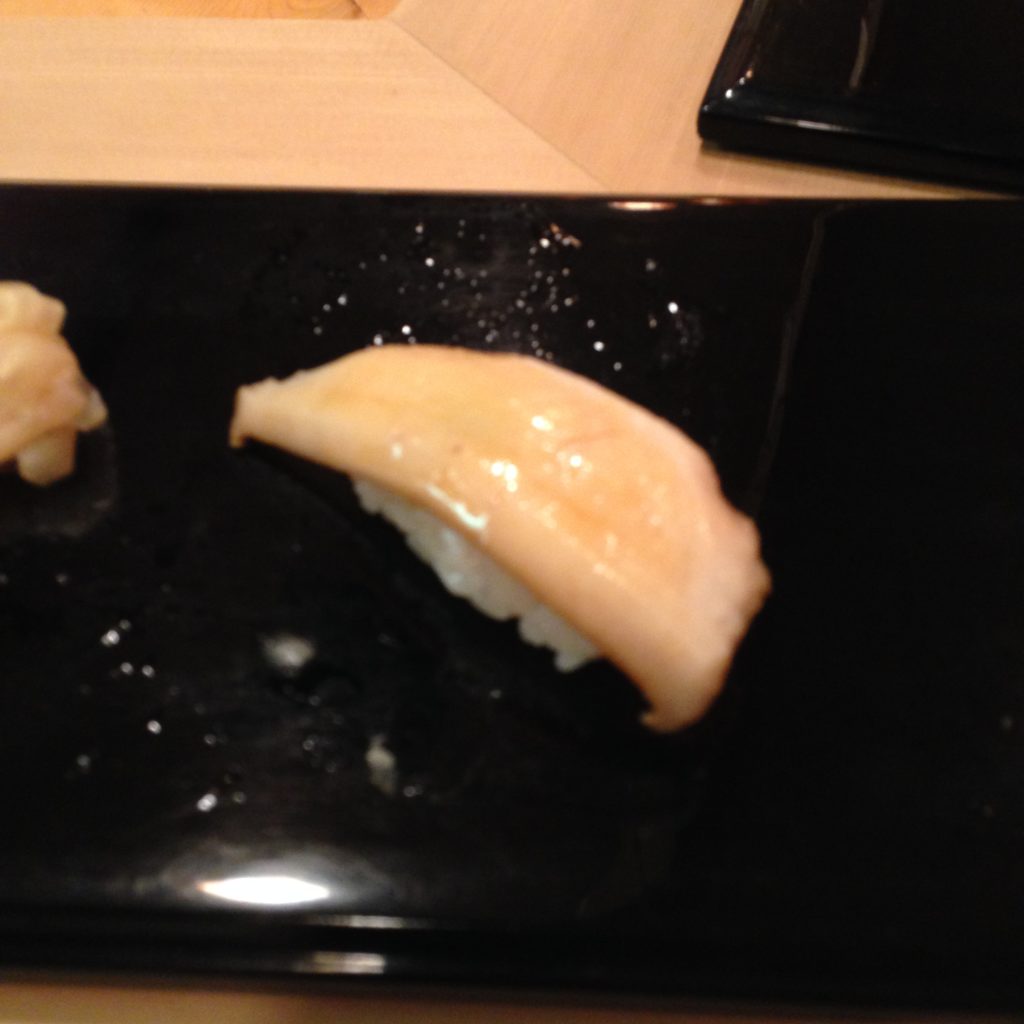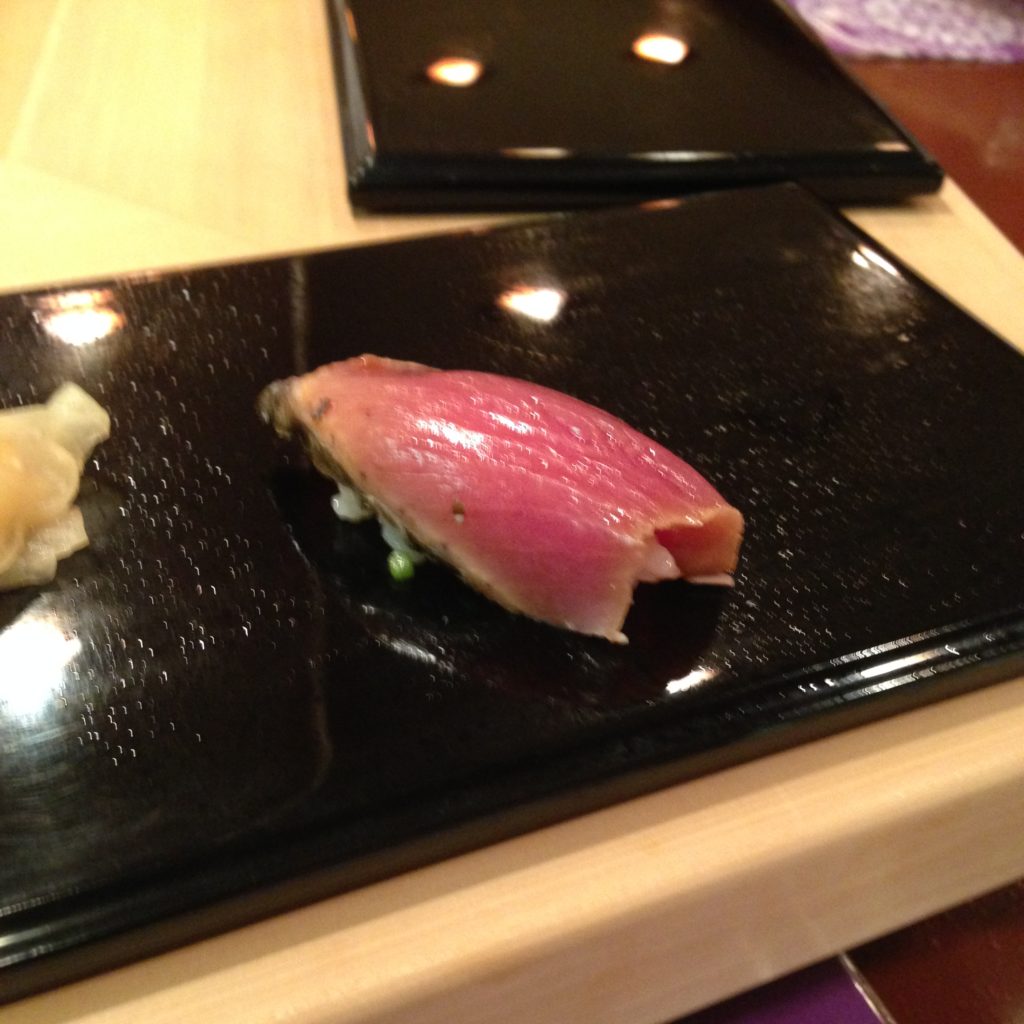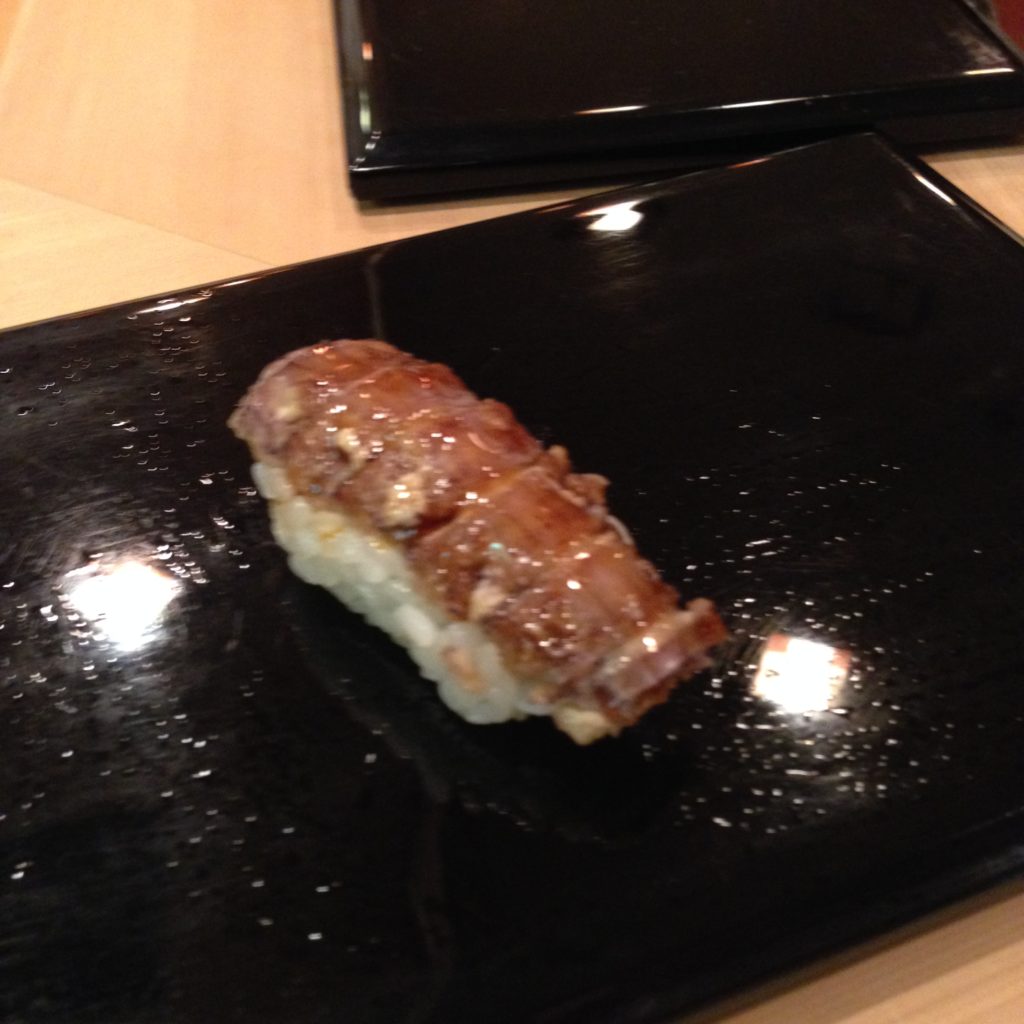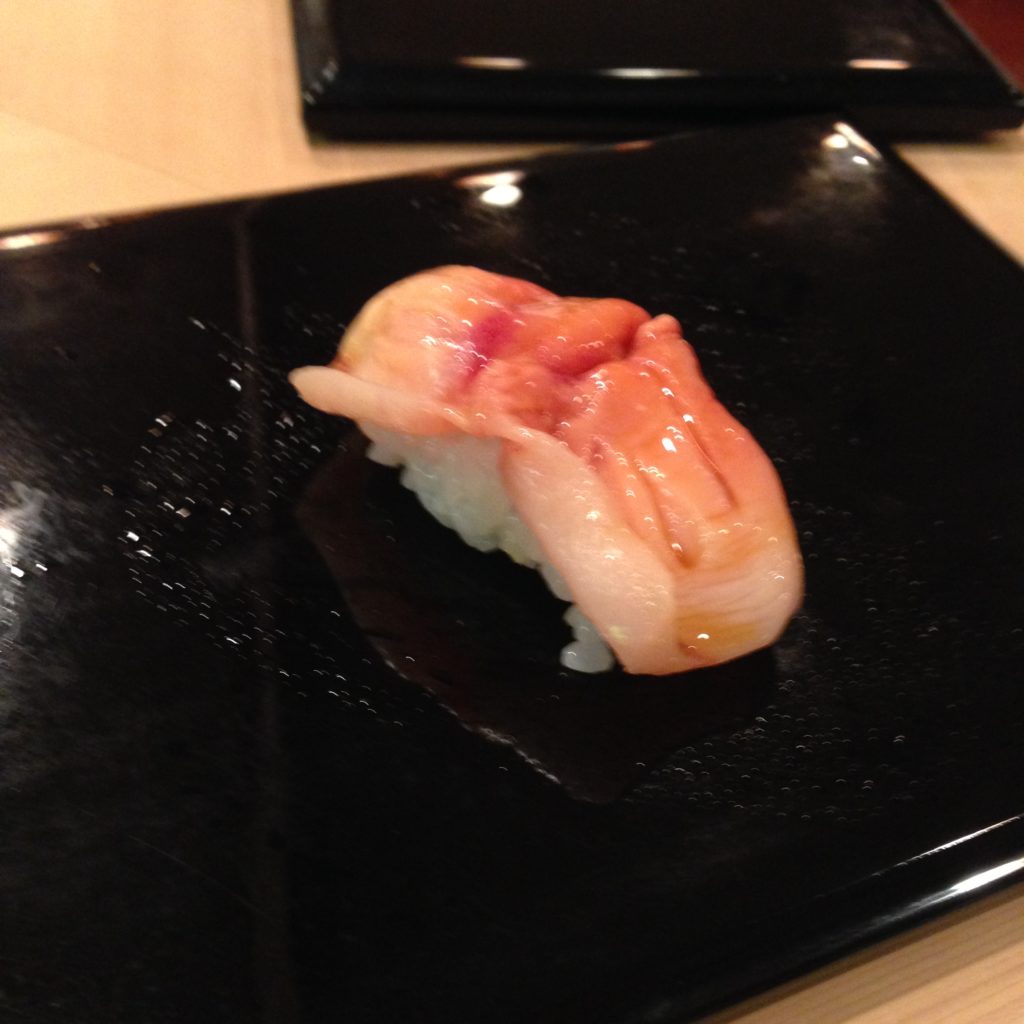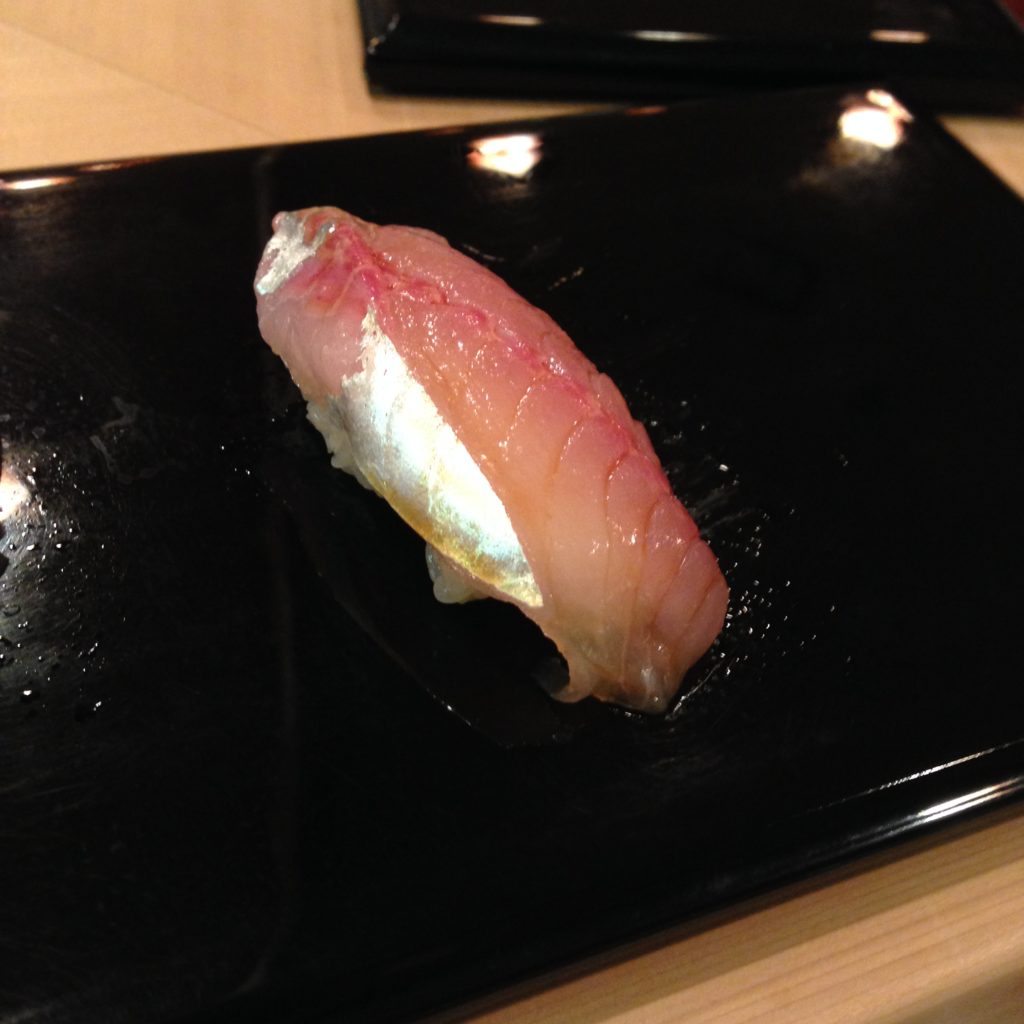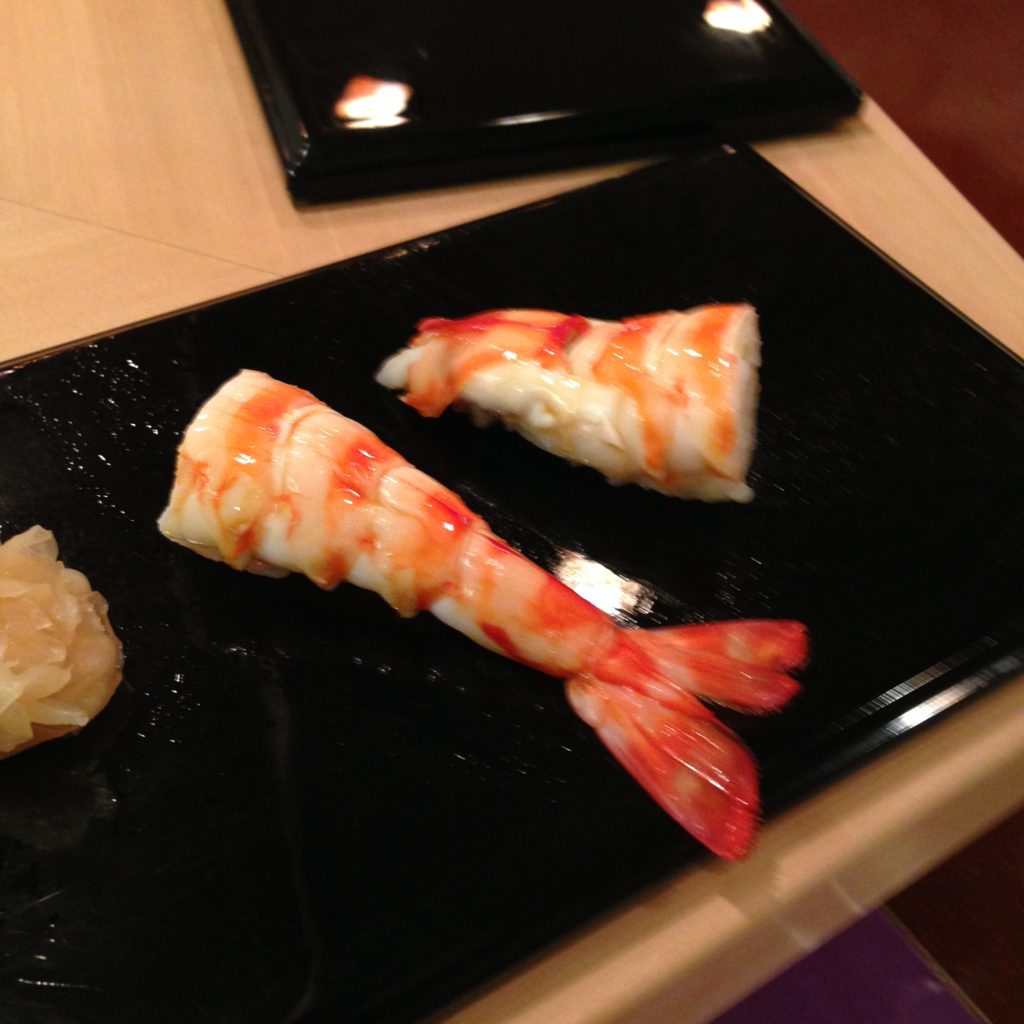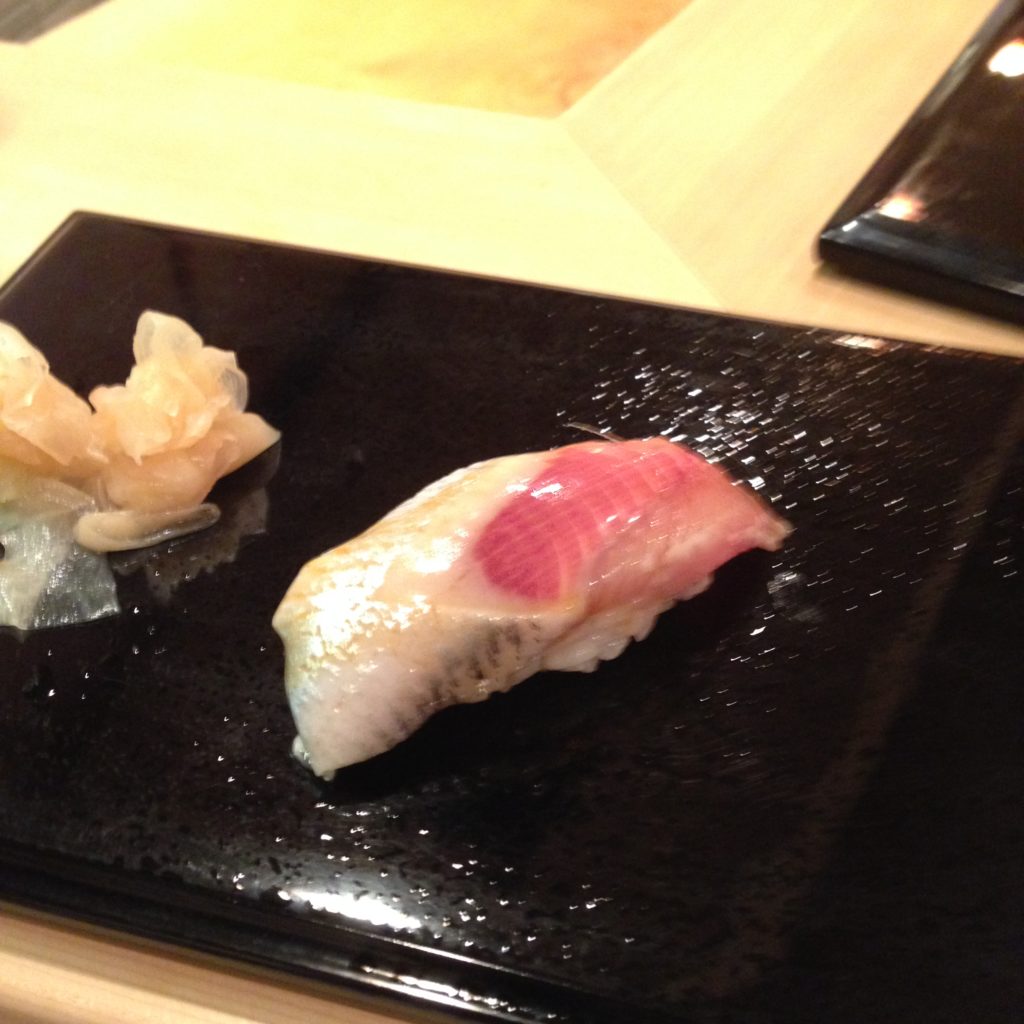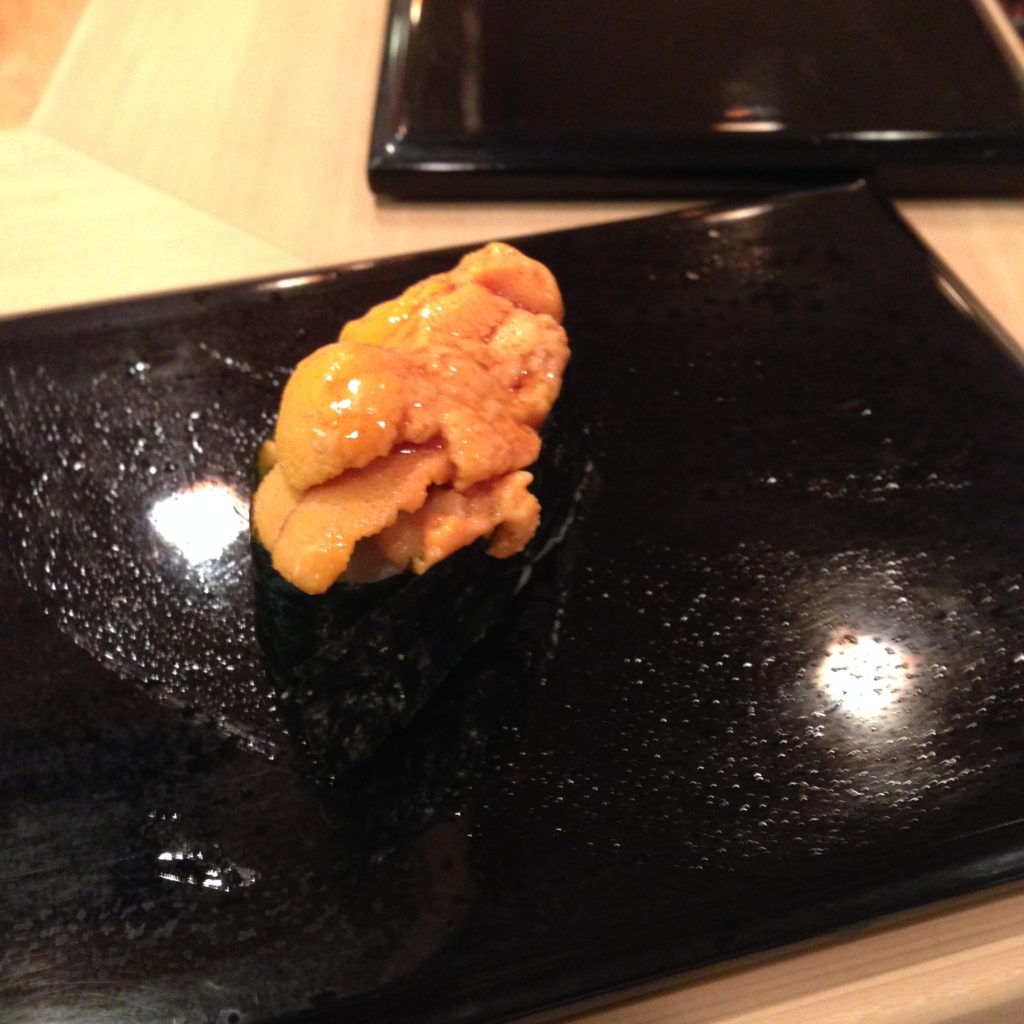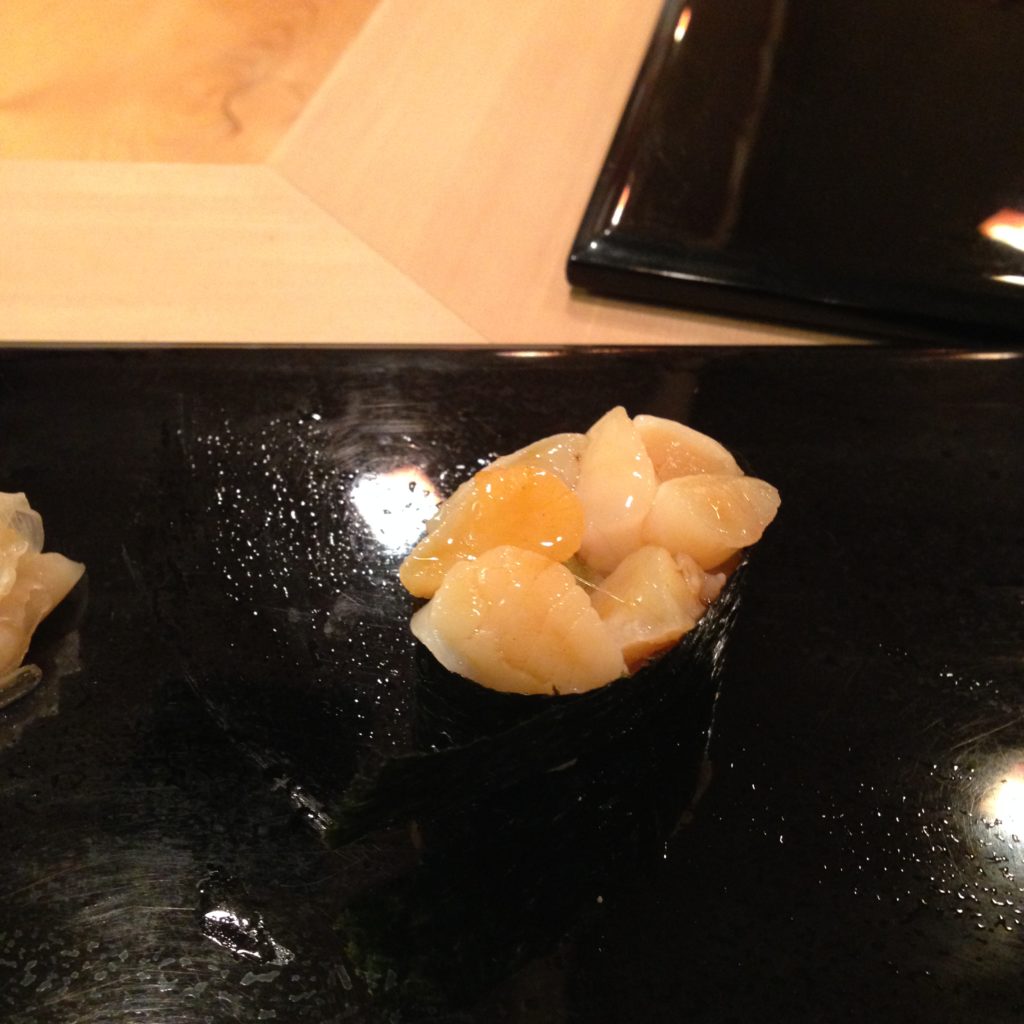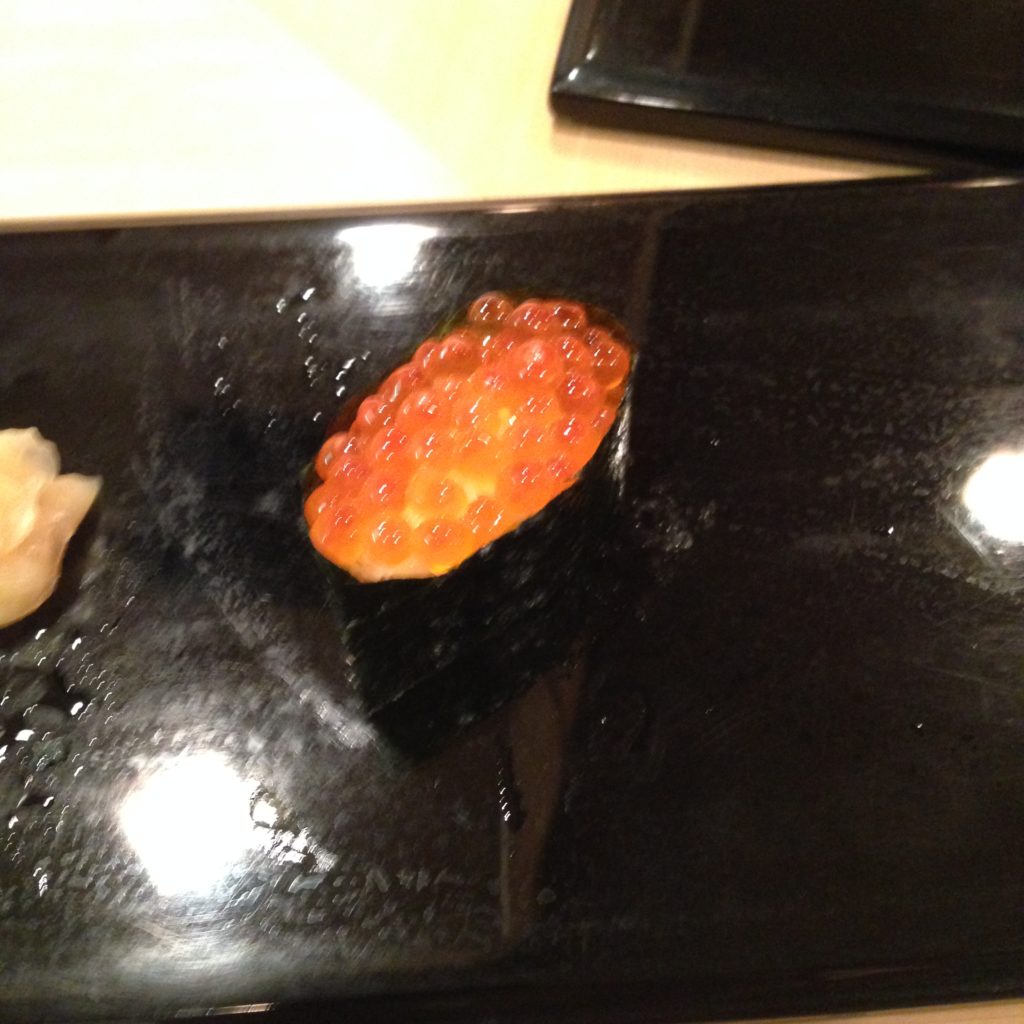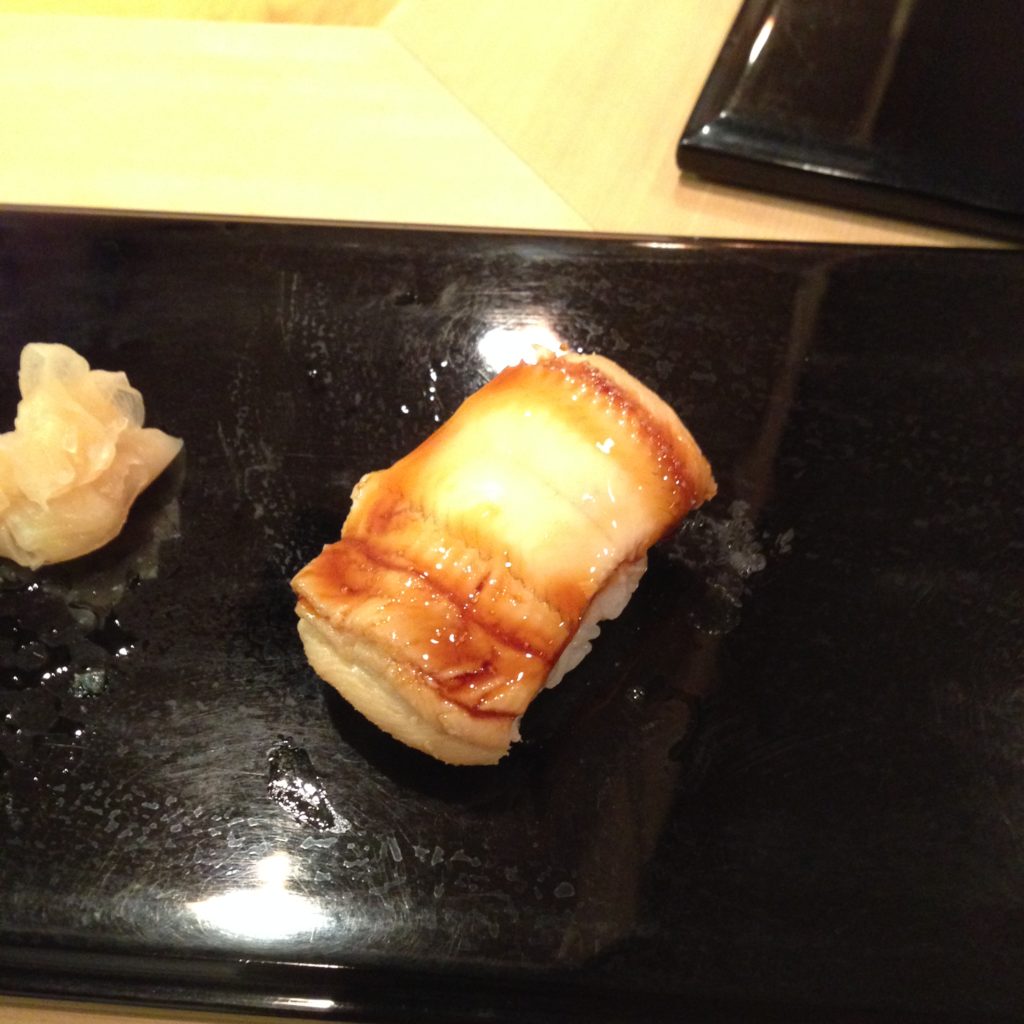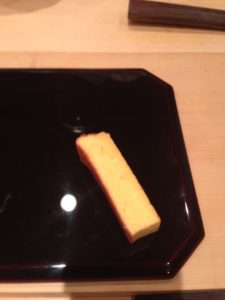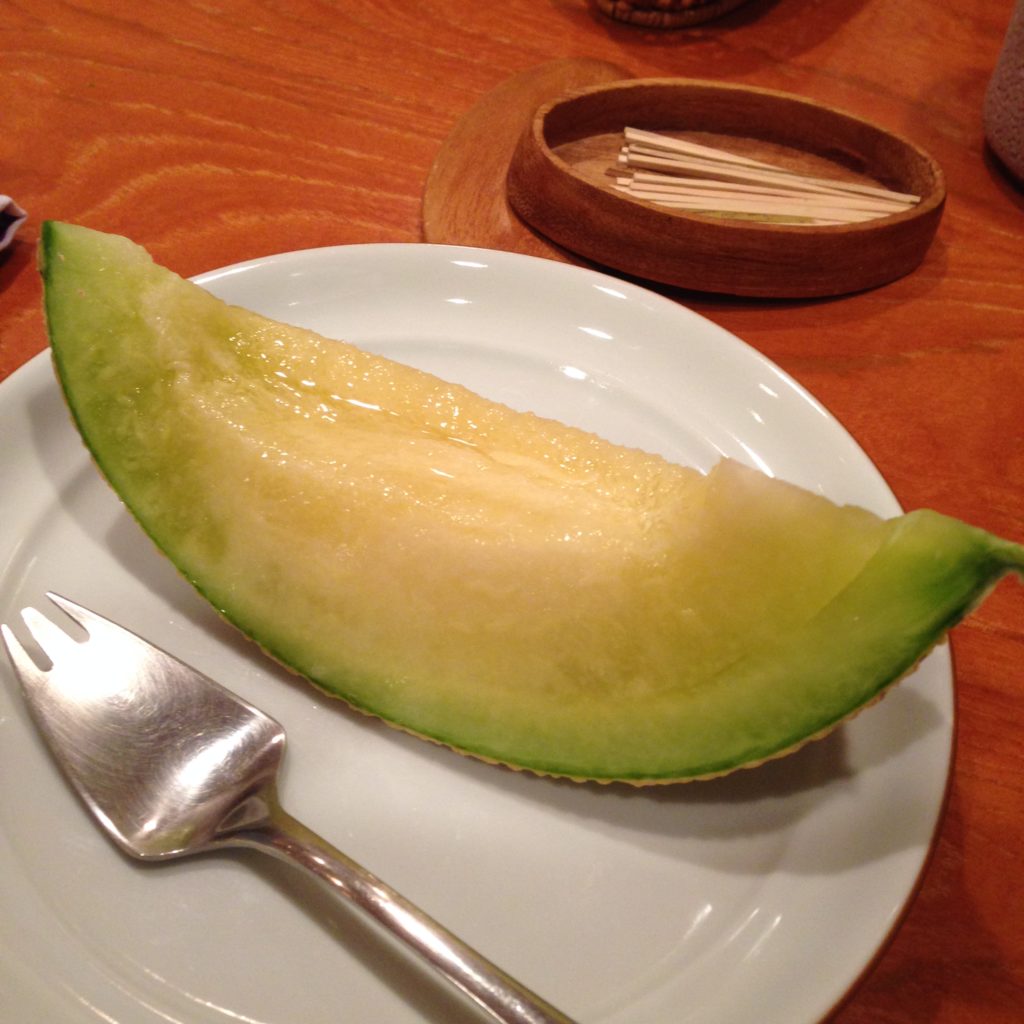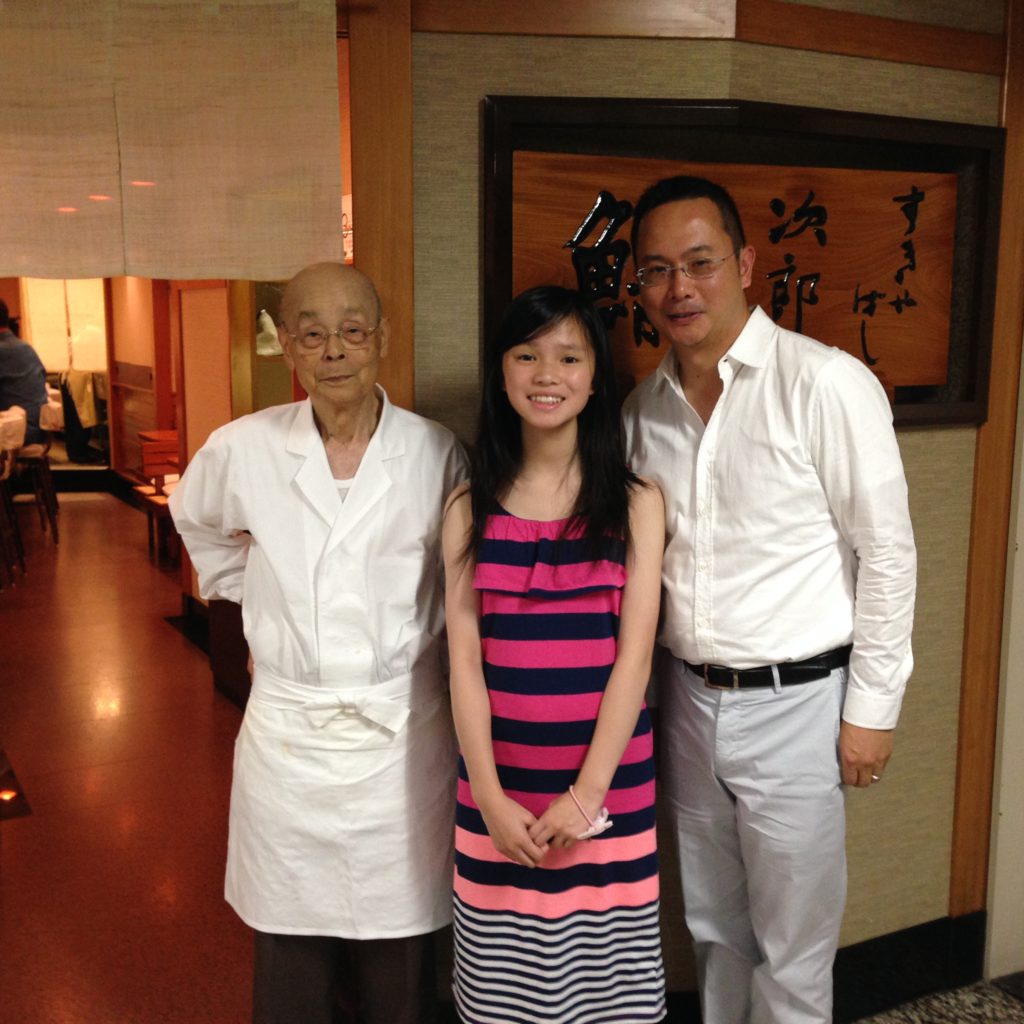
August 1, 2014
My first post review will be to post on Sukiyabashi Jiro which I took notes on as I have dragged my feet in creating this blog. In August 2014, Jiro Ono was 90 years old, yet he was vibrant and alert as he expertly served us some of the best sushi in the world.
Scoring reservations was difficult as Jiro Ono continues to be exceeding popular and famous after appearing in Anthony Bourdain’s “No Reservation”, his documentary “Jiro Dreams of Sushi”, and even a visit by President Obama in April 2014. Yet, my concierge from the Peninsula in Ginza was able to score two seats for lunch for August 1st, 2014. My wife lucked out as she was scheduled to fly back two days before, so my lucky twelve year old daughter got to enjoy a fantastic lunch with me. That’s her in the picture above. The hotel warned us that Jiro may not be present as he had heart complications earlier in the year, but we were lucky as he was back as a healthy 90-year old this year.
Watching Jiro Ono mold the nigiri was a treat as every motion was expertly executed with what seemed like no wasted motions, yet the shari (rice of the sushi) was extremely light to the touch yet molded tightly. Once in the mouth, it had a light quality that broke apart and you could feel each pebble of rice that added a textural contrast to each slice of neta (sliced fish). Even more distinctive was that the rice was served at body temperature, with a slightly acidic vinegar flavor that enhanced the flavors of each of the 19 courses.
First course was Karei (flounder). The cut was perfect and the quality of the first showed itself in the almost translucent quality. Jiro brushed a light layer of tsume (soy glaze) on top. I think he selected this as the first course deliberately- as it was almost a palate cleanser- introducing the sweetness of a slight burst of fishiness for the rest of the lunch courses to come.
Sumi-Ika (squid) – I love Ika in general and Jiro is one of the best. The freshness showed as there is a slight chewiness that engages the teeth and tongue, and was complemented by the brush of soy sauce.
Shima Aji (Striped Jack/white trivially)- which I heard peaks in summer- had a taste that’s a cross between Aji and Seabream. There was almost a sweetness to the fish, yet balanced by the fattiness.
Next up was the trio of tuna tasting. First was the Akami (lean meat of the tuna). Prior to Japan, I tend not to order the lean cut of tuna, as I find it tasteless except for a slight mineral taste. But after Japan, I found the Blue Fin tuna- especially the Akami- to be complex and flavorful. Perhaps it’s the rumored 10 day aging they do, but it’s now one of my favorite.
Chu-toro- the medium fatty cut of the belly. The vinegar from the shari perfectly complemented the richness of the fattier cut. The bite melts in your mouth, yet you could still feel the fish as you chew the perfect bite.
O-toro, the fattiest cut of the tuna. You could almost feel like the whole piece melts in your mouth like butter would. The richness of the cut was perfectly complemented by the strong vinegar taste of the rice.
Kohada is overall my favorite sushi. It is a small fish that needs to be marinaded by a bit of salt and vinegar; the timing to get this perfect needs the most experienced of chefs. Jiro delivered the sushi when the bite was still delicate yet had the strong flavor from a medium fatty fish.
Mushi-awabi was our steamed abalone course. The texture was very soft, yet it still had the sweetness of the shellfish.
Katsuo is a strong and bold fish that is seared lightly on the outside. It tends to have a strong metallic taste and can be very fishy if not fresh. Once again Jiro does this fish perfectly and did not even need grated ginger on top.
Shako which is mantis prawn. I have had this in the states, where it’s tiny and usually fishy and over cooked. However, in Japan, they are bigger and fleshy. The flavor was not fishy at all and we enjoyed it.
Akagai- or ark shell- had slimy feel, yet it is chewy with a refreshing crunch as we chewed.
Aji is horse mackerel. Summer is the best time for Aji as the fish is stocky and packed with fat, giving it an exquisite taste and texture in the mouth.
Kuruma Ebi is Japanese Imperial Pawn. This was so big that it was cut into two pieces. The top portion still contains head fat and recommend to be eaten after the tail. Expertly done and very fresh, the taste was sweet and the texture was crunchy. The head portion contained additionally umami from the head fat.
Iwashi is Japanese Sardine and from the picture alone you can see the high fat content layer on the fish. Summer is the best time to eat iwashi and is highly addictively for someone like me who loves these types of fish.
Uni is sea urchin. I did not ask where this came from, but assuming it’s bafun uni from Hokkaido as the pieces are smaller and creamy looking. You cannot go wrong with Uni in Japan.
Kobashira is baby scallops. The tender bits were sweet and enhanced from the tsume sauce lightly brushed on top.
Ikura is a favorite of my younger two children and if they only could have tried these here as they were fuller and each sphere pops in your mouth as you chew.
Anago is sea eel. It is popular in summer where it is toasted and simmered and then brushed with tsume, which i assumed is done here. This just dissolves and melts in your mouth.
Tamago is egg and this almost has cake quality in the preparation. This was good, not enough to make me cry good, but still delicious. I actually thought Harukata (Michelin 2 stars and a student of Jiro) was better.
A juicy and succulent melon finishes up the course.
Overall, we enjoyed our lunch at Jiro. I see some reviews of the pacing and the attitude. My daughter didn’t mind the pacing as it was about 2-3 minutes apart and from my understanding this is Jiro’s view on optimal taste for sushi is when it’s just prepared and put in front of you. We didn’t get much of an attitude being gaijin (foreigners) and in fact when I asked for pictures, Jiro asked us to wait as he finished and as you can see from the first photo, my daughter and I were all smiles.
